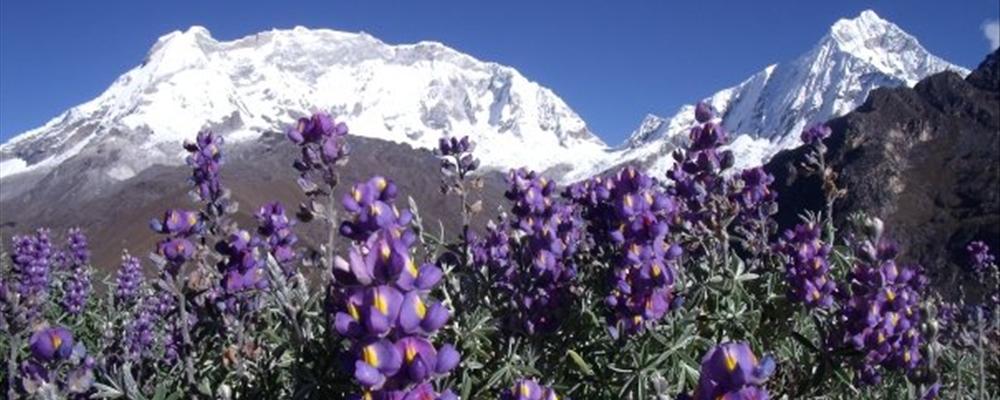
Peru
( 1 user review )Peru is a country in South America, situated on the western side of that continent, facing the South Pacific Ocean and straddling part of the Andes mountain range that runs the length of South America. Peru is bordered by Ecuador and Colombia to the north, Brazil and Bolivia to the east, and Chile to the south. Peru is a country that has a diversity and wealth little common in the world. The main attractions are their archaeological patrimony of pre-Columbian cultures and the center of Inca's Empire, their gastronomy, their colonial architecture (has imposing colonial constructions) and their natural resources (a paradise for the ecological tourism).
Understand
Although Peru has rich natural resources and many great places to visit, many of the people live in poor conditions. 36% of the population live under the poverty line. The rich, consisting mostly of a Hispanic elite, live in the cities. Nevertheless, most Peruvians are great nationalists and love their country with pride (largely stemming from Peru's history as the center of both the Inca Empire and Spain's South American Empire). Also, many Peruvians separate the state of Peru and its government in their minds. Some of them distrust their government and police, and people are used to fighting corruption and embezzlement scandals, as in many countries.
The Peruvian economy is healthy and quite strong, however, still some Peruvians see their economy as stuck in a rut. It is indebted and dependent on industrial nations, especially the United States. This dependence, combined with US foreign policy decisions in recent years has contributed to a widely held negative view about the United States government in Peru, but not against individual US citizens.
The word gringo, is used commonly, but is not generally intended as offensive. The original meaning encompassed all white-skinned people who do not speak Spanish. Many people use the word gringo exclusively for Americans or American look-alikes. It's not uncommon for blonde people to be called gringo. Peruvians do not hesitate to greet you with "¡Hola, gringo!".
Peruvians are known for being creative and also hard-working people. Most Peruvians are very busy working to earn their keep and some others to survive. That does not leave much time for travel. Many have not seen more than the surrounding villages or cities. Very few ever leave the country, although many have relatives living abroad. This may explain why Peruvians tend to be quite curious about other countries and lifestyles.
Generally, people are very friendly, peaceful and helpful. When in trouble, you mostly can rely on getting help. But as with any setting, it is always good to watch out for yourself and try to avoid bad situations. If you get into an argument, it is a good idea to remain amicable, but firm. Most of the time, you can find a compromise that satisfies everyone.
Peru is not exactly a haven for efficiency. Do not expect things to be on time, or exactly as they intend to be. Outside of the more upscale tourist services and big cities like Lima, English is uncommon and the people, trying to be friendly, can give wrong or inexact advice, a translator can always be helpful in this cases. Plan ahead and leave plenty of time for traveling. There are many interruptions of service due to protests. Even air service is disrupted due to weather or unexpected circumstances, so arm yourself with patience.
You may also want to see Tips for travel in developing countries for some useful hints.
Regions
- Madre de Dios -
- Central Coast -
- Southern Coast -
- Northern Coast -
- Southern Sierra -
- Central Sierra -
- Northern Sierra -
- Altiplano -
- San Martín -
- Peruvian Amazon -
Cities
-
Arequipa
-
Ayacucho
-
Cajamarca
-
Chiclayo
-
Cuzco
-
Iquitos
-
Puno
-
Trujillo
Other destinations
-
Chan Chan
-
Chavín de Huántar
-
Huascarán National Park
-
Nazca lines
-
Paracas National Reservation
-
Río Abiseo National Park
Get in
Visas
Tourists from North America, Australia, Japan, and the European Union (and many others, check with the nearest Peruvian Embassy ) receive a visa upon arrival for up to 90 days.
When entering the country, you need to pass the immigration office (imigracion). There you get a stamp in your passport that states the number of days you are allowed to stay (usually 90 days). You can get an extension at immigration offices in any major city for 20US$ per month plus 26 soles administration fee. Make sure to take your time, don't expect things to be ready within less than an hour or even a day. The maximum extension allows you to stay for up to 180 days in total. When those 180 days are up and you would like to stay for longer, it's possible to cross the border to a neighbouring country (Ecuador, Colombia, Brazil, Bolivia or Chile) and return the next day and obtain another 180 days. Of course you can also leave the country before your first 90 days are over.
Furthermore, you will receive an extra official paper to be kept in the passport (make sure you don't lose it!). When leaving, you need to visit the emigration office (migracion), where you get the exit stamp. Imigracion and migracion are found on all border crossing-points. Extensions of the time to stay are no problem. Traveling to and from neighboring countries by land is no problem.
By plane
The capital city of Lima has the Jorge Chávez International Airport with frequent flights all over the world. Main airlines are American Airlines, Delta, Lan, Lan Peru, Continental, Iberia, Copa, Taca and others. There are non-stop flights to Lima from Atlanta, Dallas, Houston, Los Angeles, Miami, Newark, and New York City in the United States. There is also a non-stop flight to Toronto, Canada with Air Canada. There are five different airlines that offer non-stop service to Europe. In the future there may be non-stop flights from Oceania or Asia but for now travelers usually connect through Los Angeles.
For example, Iberia flies directly from Madrid to Lima, the trip lasting around 13 hours but it is not recommended. KLM Flights are much better in quality.
When leaving the country on an international flight you have to pay a departure tax. The amount changes, but expect it to be US $25-$30 or the equivalent in soles. This has to be paid in cash before entering the departure area.
There is also an internal flight tax, around 6 USD, same conditions as the international one.
The city of Iquitos has flights to Leticia, Colombia with AviaSelva. They have a $10 departure tax.
From Ecuador
Although Ecuador neighbors Peru, it is hard to find cheap flights connecting anything but the capitals. In particular, flying from Ecuador to Iquitos is not possible directly, nor can you travel directly from other large towns across the border.
By boat
The city of Iquitos in the Amazonas region has connections by boat to Leticia in Colombia and Tabatinga in Brazil (about 10 hours).
Get around
Times and Distances
Yurimaguas-Iquitos(water): 2.5 days
Quito-Lima(bus): 25 hours
Lima-Cuzco(bus): 24 hours
Lima-Cuzco(plane): 1.5 hours
In cities and around
Inside the cities, there is usually no problem getting around on city buses or taxis. Buses cost between 0.70 and 1.50 Soles ( US$ 0.20 - 0.40) inside a city, taxis between 7 and 8 soles (US$ 2.00 - 2.40) in Lima, normally less in other cities. "Taxi" does not necessarily mean a car; the term also refers to bicycles, motor rickshaws, and motor bikes for hire. Taxis are divided between "formal" taxis, painted and marked as such and have a sticker with SOAT, and informal ones, that are just cars with a windshield sticker that says "Taxi". The last ones are better left to the locals, especially if you don't speak Spanish. Apart from the more upscale radio taxi (also the more expensive ones), the fare is not fixed or metered, but it is negotiated with the driver before getting into the vehicle. Ask at your hotel or hostal about the rate you may expect to pay to ride to a specific location to have a point of reference. There is no tipping at taxis.
"Micros" (from microbus), are small minivans or Coaster buses, also known as "combis" and "custers". They do not have actual bus stops (they exist, although in practice the driver won't stop unless you ask), but fixed routes. The direction is shown by boards in the windscreen or painted on the side. If you want to catch a bus, just give the driver a sign (raise your hand similar to hitch-hiking) to stop. If the bus is not completely overfilled (and sometimes when it is, too), it will stop to pick you up. During the ride, the ticket collector will ask you for the fee. If you want to exit, just say loudly "Bajo!" (BAH-ho) or "Esquina baja!" (s-KEE-nah BAH-ha), and the driver will stop at the next possibility. They are cramped and dirty, and not helpful unless in small towns or during off peak hours. They also stop in the middle of the road, so be careful when getting down.
Please note: Micros are very common but known for being quite dangerous, different government programs are trying to reduce the amount of micros, it is advised to not take a micro.
By bus
Some main roads, especially along the coastal strip, are paved, but there are still a lot of dirt roads in very poor condition. In the rainy season, landslides may block even major roads.
Inter-city travel is mostly by bus, and some cities have train connections. In contrast to colectivos, buses, and of course trains, start from fixed points, either the central bus terminal or the court of the appropriate bus company. It is a good idea to buy your ticket one day in advance so that you can be relatively sure of finding a seat. If you come directly before the bus leaves, you risk finding that there are no more seats available. In most bus terminals you need to buy a separate departure tax of 1 or 1,5 soles.
If you are so unlucky as to be taller than 1.80m, you will most likely be uncomfortable on the ride since the seats are much tighter than in Europe or the USA. In this case, you can try to get the middle seat in the rear, but on dirt roads the rear swings heavily. In older buses, the seats in the first row are the best, but many buses have a driver cabin separated from the rest of the bus so that you look an a dark screen or a curtain rather than out the front windshield. In older buses, you can get one or two seats beside the driver, which gives you a good view of the passing landscape. In this case, don't be too surprised when the driver is chewing his coca leaves.
First-class express buses, complete with video, checked luggage and even meal service, travel between major cities. You may need to present a passport to purchase a ticket.
Make sure that your luggage is rainproof since it is often transported on the roof of the bus when travelling in the Andes.
Avoid bus companies that allow travellers to get into the bus outside the official stations. They are normally badly managed and can be dangerous, due both to unsafe practices or to highway robberies, which are unfortunately not uncommon. This should be heeded especially by female travellers going on their own. There are many shoddy bus services in Peru, and it's best to go with one of the major companies such as Cruz del Sur or Ormeño. Get information at the hotel, hostal or tourist information booth before catching a ride.
By train
Even when going by train, it's best to buy the ticket in advance. Buy 1st class or buffet class (still higher), or you risk getting completely covered by luggage. People will put their luggage under your seat, in front of your feet, beside you and everywhere where some little place is left. This makes the journey quite uncomfortable, since you can't move any more and the view of the landscape is bad.
There are five rail lines in Peru:
-
Cuzco - Machu Picchu
-
Cuzco - Juliaca - Puno
-
Arequipa - Juliaca
-
Lima - Huancayo
-
Huancayo - Huancavelica
Service between Arequipa and Juliaca has been suspended as of of early 2007.
For more information on trains to Machu Picchu, go to PeruRail's web site .
The Ferrocarril Central Andino the line joining Lima to Huancayo is the second highest railway in the world and the Highest in South America. The Journey on board of the Train of the Andes, through the heart of Peru is simply breathtaking. It is an 11 hour experience where the train reaches an altitude of 4781m.a.s.l (15681ft) and goes through 69 tunnels, 58 bridges and makes 6 zigzags. In 1999, the company was privatized, in 2005, Ferrocarril Central Andino renovated their passenger wagons in a Luxurious and comfortable way which puts the railway in the list of the most famous trains along with the Orient Express and the Transsiberien.
By foot
Beside the famous Inca trail to Machu Picchu, you can do a lot of more hikes all along the Sierra, preferably in the dry season. The hiker's Mecca is Huaraz, where you can find a lot of agencies that offer guided tours and/or equipment to borrow. The thin vegetation in the higher Sierra makes off-trail hiking easy. Good maps are hard to find inside Peru. It is better to bring them from home. Make sure you have enough iodine to purify your drinking water. When hiking in higher altitude, good acclimatisation is absolutely necessary. Take a good sleeping bag with you, since nights in the Sierra may become bitterly cold (-10°C in 4,500m altitude are normal, sometimes still colder). Beware of thunderstorms that may rise up very suddenly. Rapid falling temperature and hard rain falls are a serious danger in higher altitudes. Don't forget that the night lasts for 12 hours year-round, so a flashlight is a good idea. When hiking on higher, but not snow covered mountains, water may be rare. Getting alcohol for stoves is easy: Either buy the blue colored alcohol de quemar or, better, simply buy pure drinking alcohol. You can get this in every town for about 3 Soles (US$0,85) per liter. (Don't even think about drinking it). It won't be so easy to find special fuel for gasoline stoves. Gasoline for cars can also be found in many hardware stores (ferreterias) sold by liters, but you can actually buy it directly on gas stations, provided you bring your own bottle.
By car
It is also possible to tour the interior of the country by car. This gives you a chance to get "off the beaten track" and explore some of the areas that haven't been transformed by tourism. An international driver's license is needed for driving in Peru.
Peru has three main roads which run from north to south: the fully paved Panamericana (RN 1) which passes through the whole country; more to the east there are the partially paved Carretera de la Sierra (RN 3) as well as the Carretera Marginal de la Selva (RN 5). Most parts of these roads are toll roads in the direction from north to south. The main roads are connected by 20 streets from west to east.
Beware that, aside from a few major roads which are in good condition, most roads are unpaved and your speed on them will be severely restricted. For these roads a 4WD is necessary. This is especially true during the rainy season from November to April. You should travel very well informed about your route. Take a good road map with you (e.g. Waterproof Peru Map by ITMB). On the web, cochera andina provides useful information about road conditions, travel times and distances for more than 130 routes in Peru.
Be sure to bring plenty of gas, as gas stations in unpopulated areas are very rare and will often times be closed. Purchasing gas late at night can be an adventure all its own, as even in more populated areas gas stations tend to close early and the pumps are locked. The owner of the station sometimes sleeps inside and, if you can rouse him, he will come out and let you fill up. Be aware of the higher gasoline consumption in the mountains which often increases to more than 20 liters / 100 km (12 MPG).
The traffic regulations are almost the same as in Europe and the U.S. But locals tend to interpret them freely. You better honk in unclear situations, e.g. in curves and at crossings to indicate the right of way. Also note that traffic checkpoints tend to be scattered throughout the country and the police may try to extract bribes from foreigners for passage. It would be wise to travel with a native speaker who can navigate the roads and deal with law enforcement.
Touting
Like in most countries, also in Peru there is a vast crowd of touts hanging around the airports and bus stations or bus terminals. It is any travellers' wise decision not to do business with the people that are trying to sell you their stuff on the street/bus station/airport. First of all, if they would have a decent place, they wouldn’t have to sell it to non suspecting tourists trying to drag them off from wherever they can find them. More important, it really is not a good idea to hand out money to the first person you meet upon arriving somewhere.
TIP: When you arrive in any town, be sure to have already decided what hotel you will be going to. Don't mention this or any other information to the touts awaiting you. They will use whatever you tell them to construe lies to make you change your mind and go with them. If you’ve already picked a reasonable hotel chances are that you will be OK there and they will have any (extra) information you’d be looking for, like bookings for tours or tickets.
Talk
In tourist centers like Cusco and Machu Picchu or in high class hotels, English and sometimes other languages are spoken. If you intend to visit other sites, or other areas of the country, you'll need Spanish. Like every other Latin American country, Peruvian Spanish replaces vosotros (and its 2nd-person plural conjugations) with ustedes (3rd-person plural). For example: ¿Cómo están? instead of ¿Cómo estáis?. South American Spanish likes diminutives (gringuito is more affectionate than gringo).
If you learn languages easily, try to learn Quechua, the language of the Incas. It will be highly appreciated in the countryside of the Sierra, where many indigenous speak it as a first language. On the Altiplano, the unofficial language Aymara is widely spoken. Aymara was the language of the Tihuanacu culture.
See
Wildlife
With 84 of the earth's 104 known life zones, Peru is rich in wildlife diversity. The Amazon basin is home to pink dolphins, jaguars, giant river otters, primates, 4,000 types of butterflies and one-third of the world's 8,600 bird species.
Folklore
The diversity of Peru's people and cultures is reflected in a rich tradition of festivals, dance and music. In the Andes, the plaintive wail of the flute and beat of the drum accompany songs depicting indigenous life while dancers masked as devils and spirits are a marriage of pagan and Christian beliefs. In the jungle, ceremonial music and dance are a window into tribal life. And along the coast, a blend of elegant Spanish sounds and vibrant African rhythms reflect the Conquest and later slave labor of the New World.
Do
Trekking
Trekking is a great way to see the country. The most widely known route is the classic Inca Trail to Machu Picchu. Other popular routes include Cordillera Blanca, Colca Canyon, Ausangate Trek and Salcantay (also spelt Salkantay) Trek.
Buy
The currency of Peru is the nuevo sol. US $1 is worth 3.13 nuevo soles (as of 30 December 2008). Coins are available in five, two and one sol, and in 50, 20, 10, 5 and 1 cent. 5 and 1 cent coins are not normally accepted outside of big supermarkets or banks, so avoid them (or bring them home and give them to your nearest small child aged 3 to 10, who will enjoy them.). Notes are available at 10, 20, 50, 100 and 200 soles denominations; 200 soles notes are uncommon and will not be accepted in the same places that will not accept a 100 USD note or a 50 pound note.
Counterfeiting is common: take time to get familiar with the money and do not hesitate to reject any note or coin (especially the 5 sol coins) that look suspicious, just like any Peruvian would do. In other words, if you want to look like a savvy foreigner, take 10 seconds anytime you receive a paper note to look it over. Don't take any note that is ripped; you won't be able to use it anywhere else but a bank.
If you are stuck with a counterfeit coin or note, if you try to use it at big stores they may want to confiscate it. Don't accept damaged/ripped bills, since you will have to take them to a bank in order to change them into new ones before you can spend them. Be especially careful when exchanging money with money-changers on the street (a common way for counterfeit money to enter the money supply) or at the border (notably the one with Ecuador).
Typically, small bills are very helpful to carry around. Change large bills into small ones as often as possible. If you only have 50 and 100 Soles notes on you, consider changing them at a bank. Local merchants have been known to claim to not have any change on them, forcing you to wait in public while they search for some (potentially dangerous) and sometimes with the hope that you'll grow impatient and let them keep the change.
Travelers checks or credit cards are usual. Although cash has a ca. 2% better change rate, you are strongly advised not to carry large amounts of cash on your journey. The Banco de Credito (BCP) gives good rates on traveler checks. Rates in change offices are often somewhat worse. It's always worth comparing them before changing your money. When changing your money in change offices, check their calculations. Most of them make calculations on the fly for the amount you want using an electronic calculator in plain view, even showing you the process step by step (unless they are brutally obvious, like changing tens or hundreds). If they don't show, keep the money in your pocket and find someone that does. Even in the bank, check your bills for authenticity.
ATMs are available in big cities, upmarket hotels, and touristic areas. With a Cirrus or Maestro sign on it, you can withdraw cash easily. Make sure nobody is trying to see your PIN code. The exchange rate is the same as credit cards but fees are much lower.
In smaller towns, it can happen that there are nobody who will accept your credit card or traveler checks. For this case, you should have taken care that you have enough cash with you. Nice new Dollar bills (not too high,10 or 20 US$ bills are fine) can help, too, since they are easier to change than travelers checks. In Peru, it not as common for US$ to be accepted in transactions as in other countries (such as Ecuador). Often in small towns, local shops will change money for you. If so, it will be clearly marked. Take only US$ bills in good condition since bills slightly torn or even old-looking will not be accepted.
Costs
As a low budget traveller, you can live on US$ 15 per day without problems. Basic hotels or hostels (hospedajes) can be easily found in all Peru. The cost per night is about US$ 3 - 6.
There are a lot of very cheap restaurants (US$ 0.50 - 1.50), but maybe this is not the best place to save your money. In somewhat better restaurants you can get lunch and dinner menus for US$ 2 - 3. Of course, in every city you can find restaurants where you can spend US$ 20 and more if you want.
Buses are not very expensive. The usual price for a 10 h bus ride in a normal bus (not "Royal Class" or something like that) is about US$ 6. However, you'd do well in paying the extra buck, the difference between a $6 ticket and a $12 is enormous. Again, avoid bus companies that allow travellers to get into the bus outside the official stations. They are normally badly managed and can be dangerous, due both to unsafe practices or to highway robberies, which are unfortunately not uncommon. This should be heeded especially by female travellers going on their own. Get information at the hotel, hostal or tourist information booth before catching a ride.
Trains (except the ones for Machu Picchu, which are relatively expensive) run for similar fees.
Don't forget to retain your exit fee of US$30.25 They do accept USD or Soles for the fee and be sure to pay the exit fee before you get in line for security checks or you'll get to wait again.
Handicrafts
Peru is famous for a lot of different, really nice and relatively cheap handicrafts. Keep in mind that buying handicrafts support traditional skills and helps many families to gain their modest income. Look for:
-
Pullovers, and a lot of other (alpaca-)woolen products in all the Sierra. Puno is maybe the cheapest place.
-
Wall carpets (tejidos).
-
Carvings on stone, wood and dried pumpkins.
-
Silver and gold jewellery.
-
typical music instruments like pan flutes (zampoñas), skin drums.
-
many other
Do not accept any handicrafts that look like (or actually are) precolumbian pottery or jewelry. It is illegal to trade them and there is the possibility not only of them being confiscated, but of being prosecuted for illegal trading, even if the actual artifacts are copies or fakes. Dealing with the police from the criminal side is messy and really unpleasant.
Buyer beware: Watch out for fake (Bamba)Alpaca wool products many items sold to the unsuspecting gringo are actually synthetic or ordinary wool! That nice soft jumper in the market for $8 or so is most certain to be acrylic. Even in places such as Puno there is no easy way to tell if it is made from Alpaca, sometimes it might have a small percentage of Alpaca mixed in with other fibres. Baby Alpaca is not from baby animals but the first shearing and the fibre is very soft and fine. Generally Alpaca fibre has a low lustre and a slightly greasy hand to it and is slow to recover from being stretched. Shop and compare; real Alpaca is expensive.
Bargaining
Bargaining is very common. If you are not used to it, respect some rules. If you intend to buy something, first ask the price, even if you already know what it actually should cost. Then check whether everything is all right. (Does the pullover fit you? Do you really want to buy it? Is the expiration date on the cheese exceeded? etc.) If the price is OK, pay it. If not, it's your turn to say a lower price, but stay realistic. First get an idea about how much you would expect to pay. Then say a price about 20-30% lower. It's always good if you can give some reason for that. Once you have said a price, you cannot give a lower one later. This would be regarded as a very impolite behavior. If you feel that you can't get your price, just say "No, gracias." and begin to walk away. This is your last chance. If you are lucky, the seller will give you a last offer, if not, say "No, gracias." again and go on walking. Realize that most of the products in touristy markets (i.e. the market in Pisac) will be sold in nearly every other market throughout your travels in Peru and South America, so try not to worry about never again finding that particular alpaca scarf.
Keep in mind: Never begin to bargain if you don't really want to buy! It is similarly important not to over-bargain. Poverty can force a vendor to sell, even without making a fair profit. In fact, when dealing with vendors in poorer areas of the country it is worth considering whether getting the "best price" is really what is most important to you.
General Notes
Supermarkets can only be found in cities and are somewhat expensive. In every town, there is at least one market place or hall, except Lima that has a dense concentration of supermarkets, malls and department stores. In cities, there are different markets (or sections of one big market) for different articles.
Stores with similar articles tend to be grouped in the same street. So, if you once know the appropriate street when looking for something special, it shouldn't be no more problem to find it quite soon.
Giving tips in restaurants (at least when basic or middle-range) is not very common but 10% for good service is polite. In the cities, you will always find some beggars, either sitting on the streets, or doing a musical number on the buses. Many of them really need help, especially the elderly and handicapped. Usual givings are about 0.10 - 0.20 Soles (US$ 0.03 - 0.06). This is not much, but some unskilled workers don't get much more than 10 Soles for a hard working day. Whether you want to give money to child beggars or not is your decision. But consider that doing so may make it more attractive for parents to send their children begging in the street instead of sending them to school. Buy them food instead, they do need it.
Eat
Peruvian cuisine is among the most varied in the world. Not only does the country grow a variety of fruits and vegetables, but it does so throughout the year. Peruvian geography offers at least 8 different climates (desert along the coast, steep and high mountains, the Amazon basin). In Lima, due to its history as an important Spanish colonial port, the dishes are a mixture of amerindian, spaniard, african, asian and even italian influences that contribute to the ever changing platos criollos (creole dishes). Rice is the staple foodstuff, and expect many dishes to include rice, in the Siera it's corn and potatoes, and in the Jungle yuca. Meat is traditionally included in most Peruvian dishes. Chicken (pollo), pork, sheep and beef are common. Alpacas are actually kept for wool, not for meat. Mostly, you will find that alpaca meat is rather tough. An Andean delicacy is guinea pig (cuy). Peruvian cuisine includes dishes which use various organs, including anticuchos, a kebab made from very marinated and spicy beef heart, and cau-cau (sounds like cow-cow), made from cow stomach served in a yellow sauce with potatoes. Anticuchos are a standard street stall food, but be careful with it.
Fish can be found along the coast (of course), but also in the jungle area since the rivers supply fresh fish (but beware of contamination in the area known as high jungle or selva alta, where most of the cocaine is made and strong chemicals get dumped into rivers; mining is a minor source of pollution in this area). In the Sierra, trout (truchas) are bred in several places. A very common fish dish is ceviche, raw fish prepared by marination in lemon juice. Popular variations of the dish can include shellfish, and even sea urchin. The exact recipe and mode of preparation of ceviche will vary from region to region. Definitely worth a try, especially in summer, but cleanliness and sanitation make all the difference. Use care when buying from street vendors and remember that it is often served spicy.
Throughout Peru there is a wide variety of potato dishes (papas, not patatas as in Spain), the traditional Andean vegetable. Papa a la Huancaina is a tasty dish of potato slices and diced boiled egg topped with a thin, creamy yellow sauce, and usually includes a lettuce leaf and an olive or two. (A similar green sauce, called Ocopa, can be served over potatoes or yuca.) Papa rellena is mashed potato reformed into a potato-like shape, but with meat, vegetables, and other spicy filling in the middle. Aji de gallina is shredded chicken in a thick, spicy, cheese-based sauce over sliced potatoes, often with an olive and slice of hard-boiled egg. Causa is mashed potato layered with mayonnaise-based tuna salad mixed with hot peppers.
Many Peruvian dishes can be very spicy and heavy, so if you have a weak stomach, proceed with caution.
Nowadays, the transport routes from the flat jungle areas are good enough to supply all the country with vegetables and fruits. Nevertheless, vegetables still have the status of a garnish for the meat. Vegetarian restaurants exist in all cities, but are relatively rare. In most areas, there is a rich offering of tropical fruits and fresh squeezed juices.
The natives typically eat in small restaurants or Chinese eateries ("chifas"); a menu there costs 5-8 Soles and includes a soup, a choice of main dish, and a drink.
If you count on international fast food chains, you will be disappointed. You find them almost nowhere except in the largest cities, and the prices are uniformly astronomical.
Peruvians are quite proud of their desserts, especially in Lima. Try them with care, since they tend to be extremely sweet and loaded with sugars, eggs yolks and similar ingredients. Try mazamorra morada, or purple custard, made from the same purple corn used for chicha morada drink; together with arroz con leche (rice with sweetened condensed milk) is called a combinado (combination). Picarones are a sort of donut, made from fried yams dough and served with chancaca, a very sweet sugarcane syrup. And the sweetest dessert suspiro Limeño is perfect if you are in sore need of a high-calorie glucose shock.
Drink
The Pisco-Nasca area is famous for wine cultivating. Their more expensive vintages compare favorably against Chilean imports. Beer is nice, stronger than American brands but less full bodied than European ones. Most of Peruvian beers are made by Backus, currently owned by SAB Miller.
When drinking at bars and/or restaurants, be aware that Peruvian "Happy Hour" is a little different than in most countries. Prices for drinks will usually be posted on the walls and be a little cheaper than normal. The real differences is that you will be served 2 drinks, instead of one, for the listed price -- giving a new meaning to the term "half price." This can be a great way to save money (if you are traveling with a group) or to meet locals (if you are traveling alone). It can also lead you to get completely falling-down-drunk by accident, so be careful.
-
Inca kola, . The Peruvian equivalent of Coca Cola in the rest of the world, which was recently purchased by Coca Cola yet retains its unique taste. It is bright yellow and tastes like bubble gum.
-
Pisco Sour. An alcoholic drink with an interesting ingredients list, such as egg whites, that is the main drink in Peru and is available in most places. It is made from Pisco, a peruvian kind of brandy that is worth a try; it is a strong drink as pisco is over 40° (around 70 to 80 proof) spirit, and the sweet taste can be deceiving. Since Chile registered the brand Chilean Pisco for commercial purposes in some countries, peruvian producers decided to defend the denomination of origin(Pisco is a very old city in Peru) by being very strict about the quality standards. Be sure that you will find a very high quality product in any brand of Pisco made in Peru.
-
Emoliente. Another popular drink in Peru, often sold in the streets by vendors for 50 centimos (approximately 16 cents US). Served hot, its flavor is best described as a thick, viscous tea, but surprisingly refreshing - depending on what herb and fruit extracts you choose to put into it, of course. Normally the vendor's mix will be good enough if you choose not to say anything, but you're free to select the mix yourself. Normally sold hot, is the usual after-party drink, as a "reconstituyente", but it can be drunk cold too.
-
Chicha de Jora, A cheap traditional alcoholic drink made from corn that is fermented and rather high in alcohol content for a non-distilled beverage. Not normally available at formal restaurants and quite uncommon in Lima outside of residentail areas. Places that sell chicha have a long stick with a brightly-colored plastic bag on it propped up outside their door.
-
Chicha morada, not to be confused with the previous one, is a soft drink made from boiled purple corn, with sugar and spices added (not a soda). Quite refreshing, it is widely available and very recommendable. Normally Peruvian cuisine restaurants will have their freshly made supply as part of the menu; it is also available from street vendors or diners, but take care with the water. Bottled or canned chicha morada is made from concentrates and not as pleasant as freshly-boiled chicha.
-
Coca Tea or Mate de Coca, a tea made from the leaves of the coca plant. It is legal to drink this tea in Peru. It is great for adjusting to the altitude or after a heavy meal. It may be found cold but normally is served hot.
-
You can find many places that serve fresh fruit drinks. Peru has a wide variety of fruits since its natural variety, so if you get a good "jugueria" you will have lots of options to choose from.
-
The peruvian amazon cities offer some typical drinks too as: masato, chuchuhuasi, hidromiel and others.
-
Coffee. Peru is the world's largest producer of organic coffee. Ask for 'cafe pasado', the essence produced by pouring boiling hot water over fresh ground coffee from places like Chanchamayo.
-
All of Peru's wines are inexpensive. Tacama, Ocucaje and Santiago Queirolo branded wines are the most reliable.
-
Cusqueña is the local brand of Peruvian Beer, available at most bars and restaurants. It is light, cheap, and surprisingly tasty. There other reliable brands, however. Be careful when drinking in high altitudes (i.e. Cuzco) as you will get drunk much faster than normal.
-
When traveling in cosmopolitan areas (Lima, etc), be sure to check out a supermarket chain such as Wong's. This is a great way to stock up on snacks for traveling, as well as a place to buy hard-to-find products such as imported Cuban Rum (especially sought after by Americans).
Sleep
Hotels in Peru are very common and fairly cheap. They range from 1 - 5 stars. 5 star hotels are normally for package tourism or business travel, and very uncommon outside of Lima. 4 star hotels are usually a bit on the expensive side ( > US$30 per night) and not common, but in large cities. 3 star hotels are a good compromise between price and quality and usually US$10 - US$30. 2 and 1 star hotels are very cheap ( < US$10), but don't expect hot water or a particularly safe neighborhood.
In many cities there are hotels in residential areas, but they are not tourist hotels but "couples" rooms for lovers. They are usually signed as "Hostel", which can confuse the unaware traveller thinking it was a backpackers.
Learn
Peruvian Spanish, particularly in the Sierra and jungle, is pronounced much more clearly than European Spanish and Spanish from other Latin American countries, especially Mexico, Colombia and Chile. People don't tend to speak too fast, although in coastal areas, especially Lima, people speak considerably faster than in other areas, and they also use slang quite liberally. On the whole, Peru is a good and cheap place to embark on Spanish courses (once you are there).
Some slang terms:
chévere, bacán, cool.
chela (Cerveza), a beer.
Me da cólera, Me llega, it pisses me off.
Ya, right, sure (sometimes "ok" or "yup").
Loco ,crazy person.Usually said in a friendly manner, also means "mate, friend, buddie"
Tombo, is cop (and cops don't like hearing it).
bamba counterfeit goods, bad or illegal products
Money is often refered to as plata (as in silver). Eso cuesta mucha plata = that's expensive.
Some slang terms come from Quechua:
Que piña: means 'what bad luck' even though 'piña' in Quechua means 'coraje' or in English 'infuriating'.
Tengo una yaya: means 'I'm injured'. In quechua 'yaya' means injury. And 'yawar' means blood.
Work
While there a very limited options for unskilled work and local wages are very low, teaching English or other language tutoring is an option.
Avoid paying for volunteering. Simply contact a bunch of NGOs and let them know you are interested in working for them. Sometimes you can also get a paid job after doing some volunteer work. Just be clear that you are able to stay a fixed amount of time for unpaid work, and that you would need some money to continue your work.
Stay safe
Emergency numbers in Peru are 011 / 5114. In Lima ring 105. In Lima and some of the larger cities there is a sort of local police called "Serenazgo": you may ask for help but they have no tourist oriented services.
-
Be aware of your surroundings and try to avoid unlit or unpopulated areas especially at night. There is a lot of petty crime that can turn violent. Avoid groups of male youngsters since there are many small gangs trying to rob passerbys. If you witness a robbery be very careful before intervening, since robbers may be armed and are quite prone to shooting if they feel threatened.
-
Armed robberies of tourists are fairly common.
-
A dirty old backpack with valuable contents is safer than a new one with old clothes in it. It's often good not to look too rich.
-
Some travelers don't use wallets, but keep the bills and coins directly in their pocket. Let's say some little bills on the left side and the rest on the right side. Thus, the pickpocket's job gets much harder.
-
Don't walk around with debit- or creditcards in your pocket. Leave them in a safe place, when you do not directly need them, because tourists have been kidnapped and forced to take out money each day for a period of a few days.
-
If you want to take large amounts of cash out with you, a neck wallet is always a good idea - you can hide it under your shirt.
-
Watch out for false bills. Every bank has posters that explain what to check when getting higher valued bills. The only security element that has not been falsified is the bichrome 10,20,50,100 or 200 now also used on US$ bills. Don't be shy about checking any bills you receive. Most Peruvians do so, too. You may get false bills even at upscale places or (quite unusually, but it's been known to happen) banks, so check there too.
-
Ignore any requests to carry luggage or packages for strangers. There could be illegal items or drugs in there, and you are the one who'll be caught with them and have the problems afterwards.
-
It's also illegal to "consider to maybe accept" an offer to buy drugs. If you are offered drugs, be careful: it might easily be a trap from police, and sentences are harsh for drugs. The best thing, if offered, is simply to just say no. Some police officers will tell you that it's legal to hold some amount of marijuana, but well, just don't trust them.
-
When taking a taxi, take a quick look in the backseat, and in the trunk, to make sure there is nobody hiding there. There've been reports of armed robberies/kidnappings taking place in taxis. Afterwards, tourists are blindfolded and driven outside the city and left behind by the highway.
-
At the border crossing from Ecuador (Huaquillas) to Peru people have tried to steal passports by acting like plainclothes police officers. They give you another form to fill in which is fake. This has taken place although police and customs personnel have been next to them.
-
When traveling on buses it is recommended to keep your backpack under your seat with the strap hooked around your leg.
Police
- Tourist police are dressed in white shirts, instead of the usual green ones, and normally speak English and are quite helpful to tourists. The common police officer does not speak other language but Spanish but normally will try to help. DO NOT get in an argument with police, since they may forget about your needs and feel insulted.
Dealing with the police can take a lot of time. In order to get a copy of a police report you need to go to a Banco de la Nación and pay 3 soles. Without this the police won't give you a copy, and obviously you can only arrange this during working days.
Embassies
-
Check the address of your country's embassy or consulate before you go. If you're planning a lengthy stay it's also a good idea to register with your country's embassy.
-
British Embassy , Torre Parque Mar (Piso 22), Avenida Jose Larco, 1301, Miraflores, Lima. (51) (1) 617 3000
-
Canadian Embassy , Calle Libertad 130, Miraflores, Lima 18, Peru Tel.: (51) (1) 444-4015 Toll-Free (within the country): 0-800-50602 Fax: (51) (1) 242-4050
-
French Embassy , Av. Arequipa 3415 - San Isidro, Lima. (51) (1) 215 8400
-
German Embassy , Avda. Arequipa 4210, Miraflores, Lima. (51) (1) 212 5016
-
Italian Embassy , Av. Gregorio Escobedo 298 - Jesus Maria, Lima. (51) (1) 463 2727 - (night and holidays emergency ph#: (51) (1) 891 7557)
-
Spanish Embassy, Av. Jorge Basadre, 498 (San Isidro), Lima. (51) (1) 212 5155. embesppe@correo.mae.es
-
US Embassy , Avenida La Encalada cdra. 17 s/n, Surco, Lima 33. (51) (1) 434 3000
-
Many of the aforementioned countries also have consulates in other major cities. See their websites for more details.
Stay healthy
Vaccinations and Prophylaxis
Vaccine requirement The quantity and type of vaccines necessary to travel to Peru depend on several factors, like medical antecedents and locations included in the trip. The most habitual vaccines needed to travel to Peru are against tétanos, diphtheria, typhoid fever, hepatitis A and B, yellow fever (it is obligatory to present the certificate of vaccination against yellow fever to enter in some countries of Africa), rabies and meningitis. Some of these vaccines require more than a dose or a major time to be effective. For that reason, there is recommendable to inquire on necessary vaccines with an advance of 6 to 8 weeks before your trip.
Hepatitis A Recommended for all travelers.
Typhoid fever Recommended for all travelers.
Yellow fever: Vaccination Center Perú The government of Peru recommends the vaccine for all travelers who are going to visit forest areas (Amazonia) below 2300 meters (7546 ft). Travelers that only visit Lima, Cusco and Machu Picchu do not need vaccine for yellow fever. Vaccine for yellow fever is also required for all travelers who arrive from other countries infected with yellow fever in Africa and America. In recent years, there has been reported yellow fever in Cusco (Concepcion 2007), San Martin, Loreto, Pasco, Amazonas, Ancash, Ayacucho, Huánuco, Junín, Madre de Dios, Puno and Ucayali.
Hepatitis B For Travelers who could have sexual relations with local people, specially if the visit is by more than 6 months. Rabies For travelers who could have near contact with animals and have not get access to medical services.
Measles, Parotiditis, Rubella (SPR) If they have not been vaccinated before, two doses for all travelers are recommended.
Tétanos - diphtheria Recommended re-vaccination every 10 years.
What should I take in the suitcase? It is recommendable to travel with a small medical kit (Traveler Kit) that includes some basic medicines like antacid, analgesic pills, NSAIDs and antihistamine drugs. Also it is necessary to take some dehydrated solutions for oral hydratation in case of severe diarrhea. Also, It must include first aid articles as sterile strips, antiseptics and bandages. Do not forget to put some antibiotic against severe diarrhea or dysentery and other infections, as well as sterilized needles (because they are difficult to find in some isolated zones). Finally, you must put into your luggage scissors, clamps, a thermometer, labial protector, a suntan lotion, purifying water tablets and cleanliness equipment. If you use contact lenses or glasses, take an extra game. You must also carry a small lantern and a Swiss knife. The Traveler Kit must be prepared by your physician according to your health and destiny.
Malaria Malaria is a disease that can be fatal and is transmitted by mosquitoes. This mosquito specially pricks by night. If you are going to travel to Peru, it is very important to know what areas present a high prevalence of malaria.
The prevention of the disease is made through a medication against the malaria (prophylaxis) and the protection against the punctures of insects.
There are many antimalarial medicines. The optimal choice depends on the characteristics of the trip and the traveler. So, it is important to have some medical advice about the advantages and disadvantages of each medication. The more effective drugs are:
MEFLOQUINE (LARIAM): very extended use. Side effects include visions, and more serious neurological reactions. Those people with psychiatric and neurological problems must not take this medication.
DOXILICINE: Side effects include cutaneous reactions by contact with the sun or the risk of fungal vaginitis in the women.
MALARONE: highly effective, few side effects, expensive and difficult to obtain in Peru, only in specialized Travel Medicine CenterTravel Medicine Peru
CLOROQUINE: low risk of side effects and the most useful until years ago. Nowadays, they only have 50/60% of effectiveness for malaria in Peru (specially for the south zone where malaria falciparum has not been reported).
Whatever your choice you need to take antimalarial medicine if you are going to travel to a zone affected by the disease, and continue with the medication beyond your return. The risk of malaria, or any other disease in Peru, is much greater for a tourist than for local people. Do not suspend your medication before the indicated period.
In Peru there is no risk of malaria in the big cities. No risk in Lima and surrounding areas or in areas above the 1500 meters. There is a risk: On the coast north of the country (Tumbes, Piura, Lambayeque). In the Amazon region: Loreto department (Iquitos) with 97% of cases of falciparum country, San Martin, Ucayali, Just as Amazon (chachapoyas), Cajamarca (Jaen).It was also reported cases of vivax malaria (falciparum not) in Cuzco Department (Province of Concepción away from the tourist area of Machu Picchu) and Madre de Dios.
It is recommended that: The precautions to protect themselves from being bitten by mosquitoes are essential especially in the evening and night (especially when visiting rural or peripheral). Use a repellent (on exposed skin) containing DEET (N, N-diethylmetatoluamide to 30% -50% are effective for several hours) or Picaridina (7-15%).
Basic cares about hygiene and food It is difficult to guarantee the security of food and drink, specially in developing countries. Nevertheless you may continue enjoying local meals, this is part of the pleasures of an international trip. Be selective. The diseases that you could get go from a small diarrhea or dysentery, to one more serious disease (eg. Parasitic infection) that could ruin your trip. Therefore you should take certain precautions: Try to eat only cooked foods Avoid buffet or any other food that has been reheated and exposed to the contact with flies Avoid seafood in unknown places Crude fruits and vegetables are very difficult to sterilize: do not eat them unless you have the security that they have been washed in drinkable water or if they are possible to peel without touching the pulp. In the tropic the safest fruits are bananas and papayas. Be careful, you could reject any food you consider not safe, if it is necessary, ask for cooked food specially for you. Do not eat any food that offers few guarantees to you.
Precautions about of the water.
Drink water only when you have the certainty that it is safe. Do not drink water from the faucet or wash your teeth with it. Always use mineral water and check the bottles to make sure that it has not been opened yet and filled up (to avoid this, you can drink gasified mineral water).In restaurants, you should request to open the bottle in your presence and never take ice in your drinks (the ice cubes often are made with water from the faucet). And remember, alcohol does not make drinkable the water! Water from the faucet is made drinkable by boiling it during 5 minutes, or with chlorine or iodine drops or with special tablets/drops for it.
Punctures of insects Avoid punctures of insects reduces the risk of contracting diseases transmitted by mosquitos like the yellow fever, dengue, leishmaniosis and, by all means, malaria, in 90%. By night you should use long sleeves, long trousers, long socks and pijamas to sleep. Always use clear colors, since they attract, in less extent than dark colors, to the mosquitos. Use Insect Repellent that contains DEET. Directly apply it on your skin and clothes. Use a mosquito sleeping net impregnated of repellent, as well as other anti-mosquitos stuff in your room (spirals or electrical mosquito repellents). Use them all the nights.
Rabies In Peru there have been reported cases of rabies in animals even in small zoo parks, so you should avoid to touch or to play with any type of animal. Rabies is not only transmitted through biting, but also by scratches and licks. In case of wound, it is necessary to clean it with an antiseptic lotion. If the wound is deep it is recommendable to examine it by a doctor. Take some advice about antirabic vaccines before starting off, mainly if your trip is long.
Heat and sun Do not expect to become quickly aclimated to the heat (specially in Amazonia). It will take at least 3 weeks to obtain it. During this period, avoid physical fatigue, use fresh clothes, mainly during the warmest hours of the day. Avoid direct exhibition to the sun.Use a solar cream and a hat.
Thirst is a very poor indicator of the amount of water that human needs. It is very important to take a sufficient amount from liquid (not alcohol, coffee or tea, because they are diuretics and causes a greater loss of water). The best probe that you are well hydrated is when your body produces clear abundant urine.
AIDS and other diseases There is a very high risk to be infected by AIDS and other sexual diseases. Please take the necessary precautions.
Accidents and injuries Accidents and injuries produce more deaths of travellers than diseases. Please be in constant alert.
Do not drive in bad illuminated streets by night Do not drive a bicycle or a moto Do not drive in a drunk condition and moderate your speed. If you take a taxi, ask the driver to go slowly. Use the security belt and, if you travel with children, use an adaptable chair Take a small medicinal kit: small wounds can become infected very easily. If the wound is deep it is recommendable to examine it by a doctor.
Back to homeIf you have contracted malaria or another tropical disease, it is possible that the symptoms do not become evident until much after your return to home and you may not even associate them to your trip. Visit your physician and remember to tell him about your trip to Peru.
Pharmacies
Common medicines, like antibiotics, can be bought in pharmacies (farmacias or boticas) quite cheaply and without restrictions. However, make sure the expiration date has not been reached. Pharmacists are mostly very helpful and can be consulted if needed. For less serious illnesses, they may replace a doctor.
Diarrhea
Electrolytic drinks help guard against dehydration. You can get powders to dissolve in water in almost every pharmacy. If not, just dissolve sugar and salt in water. Bacterial diarrhea can be treated with antibiotics, if it doesn't vanish during a week. Usually, pharmacies are quite helpful.
Food and drink
If you stay in good hotels you may be able to avoid catching diarrhea, otherwise you will surely contract it. Just don't worry too much about. There are some rules that could avoid the worst:
-
Avoid unboiled tap water, if possible. This can be difficult; If you eat a salad or drink some fruit juice, it will probably be prepared with tap water. Avoid ice in drinks if you can.
-
If you must drink tap water, use some purification like mikropur.
-
Don't eat food prepared in the street (if you can resist it).
-
When going to cheap restaurants, first have a smell and listen to what your nose says.
-
In some areas, refrigerators are rare. Just go to the meat section of a typical market hall and take a smell, you will understand. If you would rather vegetarian food, it can be hard to find. Chicken is worth a try, since they are mostly fresh.
-
Don't eat unpasteurized milk products.
Altitude
If you do not have experience with higher altitudes (above 3,500m), don't underestimate it! Collapses of unacclimatized tourists are not unusual, If coming from sea level, stay at medium height ca. 3000m for at least one week. Then, altitudes of around 4500m should not be a risk, although you still will strongly feel the height.
See also: Altitude sickness
Sunburn
Since Peru is close to the equator, the sun can become dangerous for your skin and eyes. Especially in the Sierra, the strong UV radiation due to the height in combination with the rather cold air may burn your skin before you notice it. Sun-blockers are easy to get in drug stores (boticas). If your eyes are sensitive to light, better bring good sunglasses from home. Of course, you can buy sunglasses in Peru, too, but you should really be sure that they block the whole UV spectrum, otherwise, they might be worse than none.
Sanitary facilities
Outside of obviously well-set up restaurants and hotels in cities and towns, toilets are often quite primitive and sometimes really dirty. It's a good idea to bring your own paper with you,as peruvian toilet paper maybe too rough as well as being one ply. It's usual. Toilet doors are marked with "baño", "S.H." or "SS.HH.". The latter two are abbreviations for servicio higienico, which is the rather formal expression. Expect to pay no more than 20 centimos at public restrooms for paper. You will find it handy to keep a roll of toilet paper and a small bottle of hand sanitizer in your backpack.
In hostels or budget hotels, you cannot rely on having water all the time. In the Andean region, it also can easily happen that showers have more or less hot water only in the afternoon since the water is heated by solar energy only. Electrically heated showers are widely spread, but the electric installation is sometimes really adventurous, since the water heater is mostly situated at the shower head. Have a look on it before turning on the shower, especially if you are tall enough that you could touch the cables or other metal during showering which can electrocute you. Don't be too paranoid though, an electric shock is mostly painful.
As woman, if you use tampons during your period, you should bring them with you from home, because they are not very popular in Peru. In Lima, you'll be able to find them in supermarket chains like Santa Isabel or Wong or at drug stores / chemists, known as farmacias and boticas. When you find them, buy enough for the rest of the trip, they are virtually unknown in the rest of the country. Alternatively you could pack a menstrual cup because they are reuseable and compact.
Respect
Don't use the word "indio", although it's Spanish. For natives, it sounds like "nigger" since it was used by Spanish conquerors. The politically correct way of speaking is "el indígena" or "la indígena" - although, like "nigger", very close people inside a circle of friends can get away with it. Another word to be careful with is chola/cholo or cholita, meaning indígena. This may be used affectionately among indigenous people (it'a very common appellation for a child, for instance) but is offensive coming from an outsider.
Even if you have about 20 "No drugs" T-shirts at home, accept that especially people from the country side chew coca leaves. See it as a part of the culture with social and ritual components. And keep in mind: Coca leaves are not cocaine and they are legal. You can try them to experience the culture. If you don't like to chew them, try a mate de hojas de coca. Also quite effective against altitude sickness.
Officially, most of the Peruvians are Roman Catholic, but especially on the country-side, the ancient pre-Hispanic religiosity is still alive. Respect that when visiting temple ruins or other ritual places and behave as if it were a church.
Contact
In all towns and villages that are not too small, it is no problem to find public telephones for national and international calls. Usually, you find them in bars or stores. Some of them accept coins, but watch out for stuck coins or dodgy-looking coin receivers as these might make you lose your money. Don't worry if your 1 Nuevo Sol coins don't get through at first, just keep trying and it will eventually work. Many public phones can be expensive, and an attractive alternative is a Locutorio, or "call-center". Typical rates include .2 Nuevo Sol/minute for calls in the country, and .5 Nuevo Sol/minute for most international calls.
You also can buy phone cards with a 12 digit secret number on it. Using a phone card, first dial 147. When done so, you will be told how much your card is still valid and be asked (in Spanish, of course) for your secret number. After having typed it, you are asked for the phone number you want to connect to. Type it in. Then you get told how much time you can talk. After that, the connection is tried.
For international calls, it is often a good idea to go to an Internet cafe that offers Internet based phone calls. You find them in the cities. Internet cafes, called in Peru cabinas públicas, grow like mushrooms in Peru and if you are not really on the countryside, it should not be a problem at all to find one. Even in a smaller town like Mancora or Chivay you can still find Internet cafes with 512kbps ADSL. The connection is quite reliable and they are cheap (1.50 - 3.00 Soles, US$ 0.40 - 0.80 per hour). Just don't expect most of them to actually sell coffee - or anything at all but computer time or services like printing. It is not uncommon to find cabinas that burn CDs directly from SD, CF or Memory sticks. Many internet cafes have headphones and microphones, for free or for an extra fee. See also Online telephone service for travel.
Government tourist information and assistance office
Peru features a tourist information and assistance service called iperú, where visitors can ask about official tourist information on Peru, as well as assistance if the tourist feels the service paid for was not provided as advertised. iperú is a free government service that works 24 hours, all year round, has offices in many important cities and destinations in Peru:
-
Arequipa.
-
Ayacucho.
-
Cusco.
-
Amazonas - Chachapoyas.
-
Ancash - Huaraz.
-
Loreto - Iquitos.
-
Lima.
-
Puno.
-
La Libertad - Trujillo.
-
Piura.
-
Lambayeque - Chiclayo.
-
Tacna.
-
Tumbes.
If you need information to plan your travel, feel free to write to iperu, tourist information and assistance, the government tourist office to iperuiquitos@promperu.gob.pe or call the 24 / 7 telephone: (51 1) 574-8000. Iperu gives free service.
Contact & location
1 Review
Add your review
The photos displayed on this page are the property of one of the following authors:
David Cobb, chany crystal, lebce, Miguel A. Vera León, Andrea Balducci, Dag Peak, 3rdparty!, Theodore Scott, Roger Nelson, Ivan Mlinaric, nick wiesner
Some photos courtesy of:
 . The photos provided by Flickr are under the copyright of their owners.
. The photos provided by Flickr are under the copyright of their owners.
This travel guide also includes text from Wikitravel articles, all available at  View full credits
View full credits
This travel guide also includes text from Wikipedia articles, all available at  View full credits
View full credits
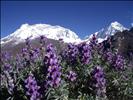
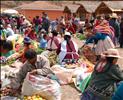


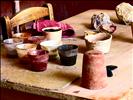


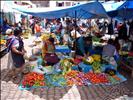
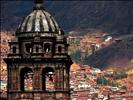

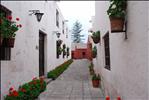








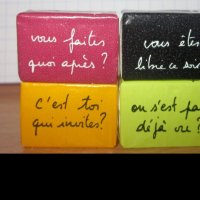


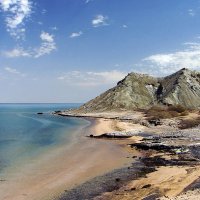




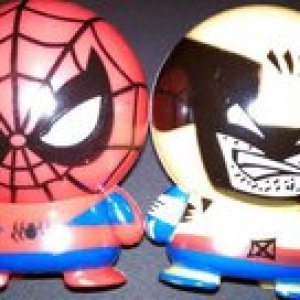











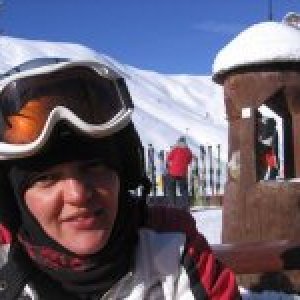




















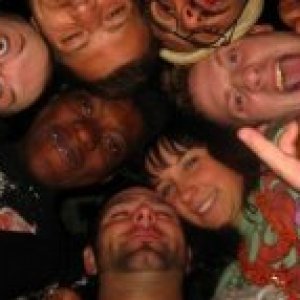



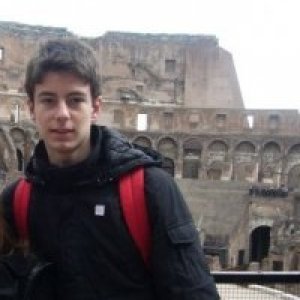










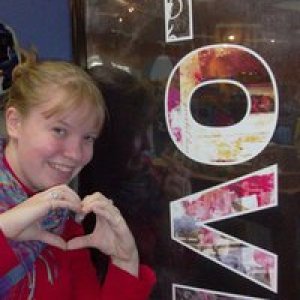

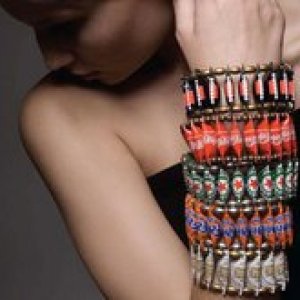

















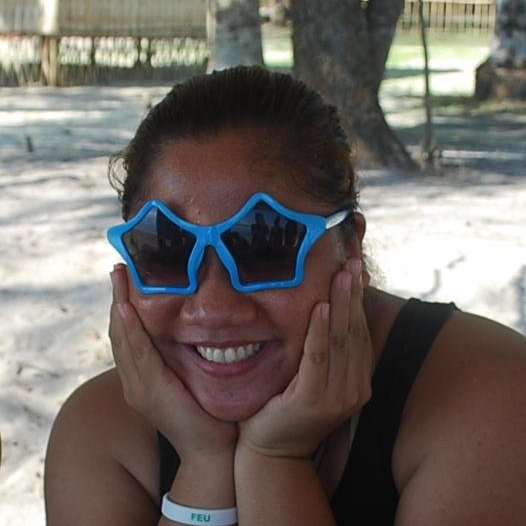
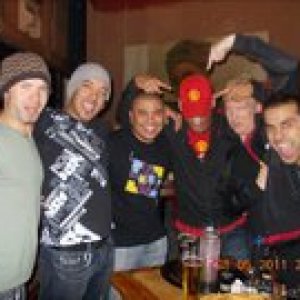



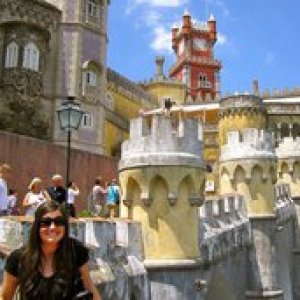







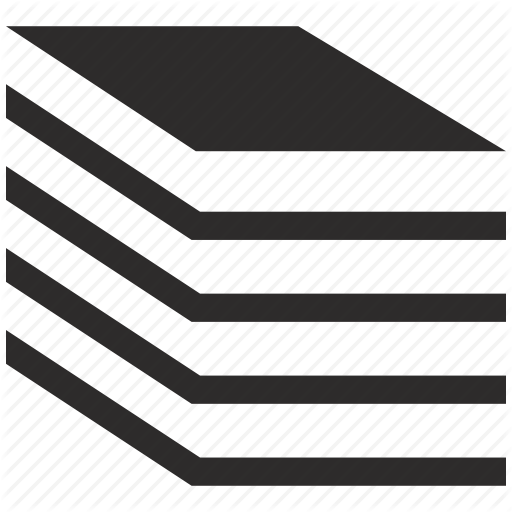


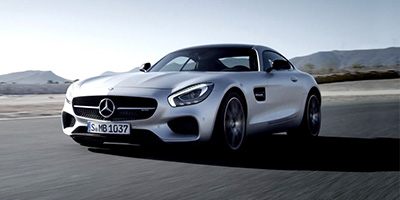






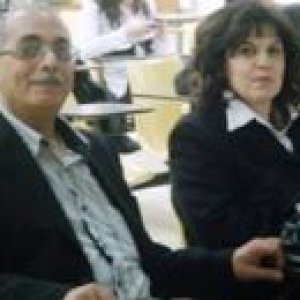





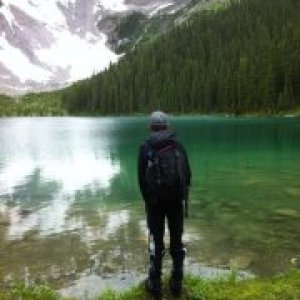













I liked
I love PeruI disliked
Nothing